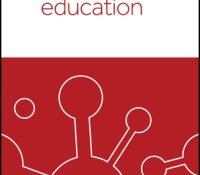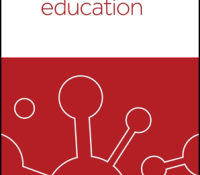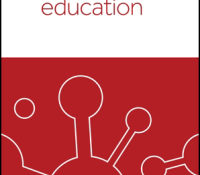tandfonline.com har udgivet en rapport under søgningen “Teacher Education Mathematics”: Abstract Formulae display:?Mathematical formulae have been encoded as MathML and are displayed in this HTML version using MathJax in order to improve their display. Uncheck the box to turn MathJax off. This feature requires Javascript. Click on a formula to zoom. Abstract This study is the first to investigate and validate the psychometric properties of an Indonesian translation of the Student Performance Opportunity of Competence Development (SPOCD) questionnaire that covers five key competencies related to the mathematics learning process, namely: (1) thinking; (2) relating to others; (3) using language, symbols and text; (4) managing self, and; (5) participating and contributing. The SPOCD questionnaire comprises 30 items, with a 5-point Likert scale. A total of 1413 Indonesian high-school students (46.4% male,… Continue Reading →
Like this:
Like Loading...
tandfonline.com har udgivet en rapport under søgningen “Teacher Education Mathematics”: Abstract Abstract Curriculum development has always been dealt as one of the most important areas of language learning and teaching by educational institutions. Null curriculum has been viewed as one of the significant kinds of curriculum types which is important due to its absence, being left out or overlooked but should not be disregarded. For this reason, a 48-item questionnaire for null curriculum in ELT with a special focus on twenty-first century skills was developed and validated by the application of the Rasch model. The Rasch model was employed to decide whether the scores of an instrument are purposive, meaningful and significant. Rasch analysis using Winsteps software version 3.73 was used to determine the dimensionality, use of response category, sample… Continue Reading →
Like this:
Like Loading...
tandfonline.com har udgivet en rapport under søgningen “Teacher Education Mathematics”: Abstract Abstract Academic self-efficacy is mostly construed as specific; task-specific, course-specific or domain-specific. Previous research in the Danish university context has shown that the self-efficacy subscale in the Motivated Strategies for Leaning Questionnaire is not a single scale, but consists of two separate course- and activity-specific scales; the Specific Academic Learning Self-Efficacy Scale (SAL-SE) and the Specific Academic Exam Self-efficacy scale (SAE-SE). The SAL-SE and the SAE-SE subscales have previously been found to fit the Rasch model, have excellent reliability, and initial evidence of criterion validity has been established. The aim of this study was to conduct a new validity study of the SAL-SE and SAE-SE scales in the Danish university context. Specifically, whether the original findings of fit to… Continue Reading →
Like this:
Like Loading...

tandfonline.com har udgivet en rapport under søgningen “Teacher Education Mathematics”: Abstract Abstract It is important for self-report scales and measures used by educators and health care professionals (such as the Physical Self-Description Questionnaire-Short Form [PSDQ–S]) to have documented reliability and validity. The aim of this study is to investigate the structural validity of the full PSDQ–S composite scale and 11 subscales using the Rasch Measurement Model. 117 healthy children (65 males and 52 females; M = 10 years, 2 months, SD = 1 year, 4 months) completed the PSDQ–S. The PSDQ–S’s rating scale functioning, dimensionality, hierarchical ordering, differential item functioning (DIF), and item and person separation reliability were examined. Results supported the scale functioning, dimensionality, hierarchical ordering, DIF, and reliability of the PSDQ–S composite scale and each of its 11 subscales. Therefore, the PSDQ–S composite scale and 11… Continue Reading →
Like this:
Like Loading...



